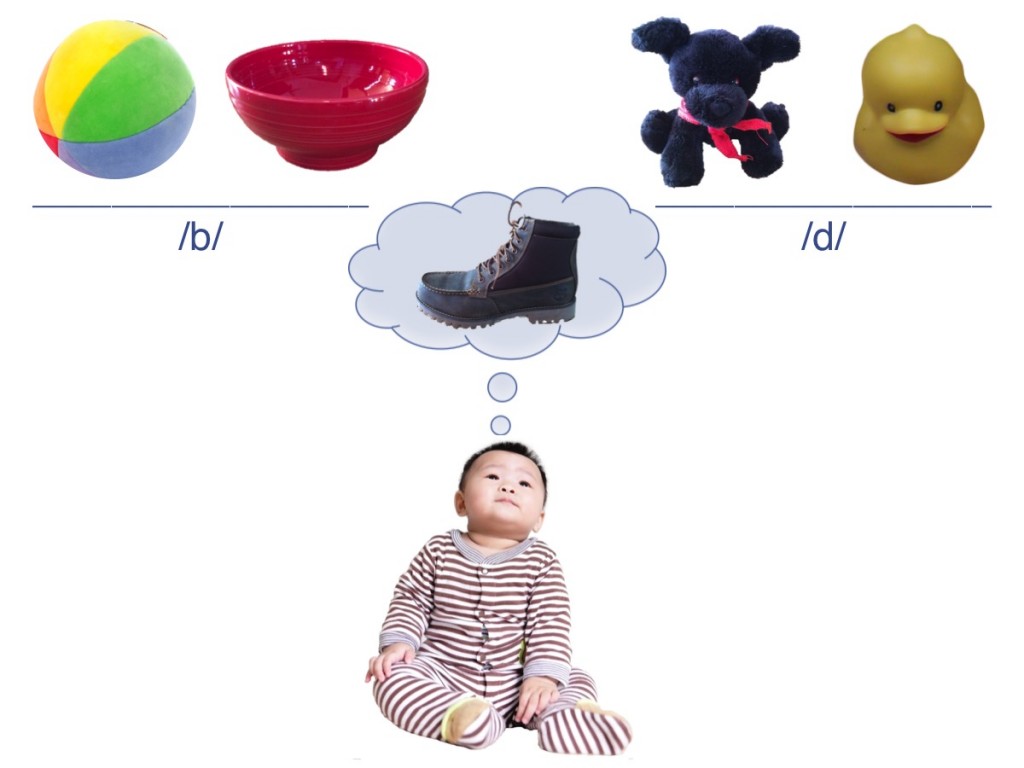
Infants also have to learn which sounds should be categorized as “the same” in their native language. Infants learning English, for example, must understand that the sound /b/ is the same sound, no matter if it is pronounced loudly or quietly, by a male or female speaker, or in a fast or slow stream of sounds. At the same time, they need to learn that /b/ is different from similar sounds, such as /d/. The ability to group together the same sounds, and distinguish them from other sounds, is called categorization.
Categorization of speech sounds is a unique human ability. Although computers have a hard time categorizing sounds coming from different speakers, babies learn to do this very well!
Research shows that infants use a variety of different tools to learn to discriminate the sounds of native language and sort them into different categories. In the next section, we will look at some of the most common tools that infants use.
-
- Categorization
- grouping together the same sounds, and distinguishing them from other sounds
- Phoneme
- the smallest unit of speech (a sound)
- Sensitive period
- a time in development when the brain is especially ready to learn a skill
- Speech perception
- listening to speech
- Speech production
- speaking
- Statistical learning
- computing how likely it is that certain events (in this case sounds or syllables) occur compared to others